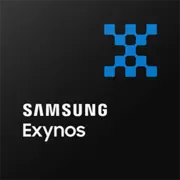Samsung Exynos 1080

Samsung Exynos 1080: the balance of power and efficiency in a compact form factor
Mobile processors are the heart of modern smartphones, determining their performance, energy efficiency, and capabilities. Among these solutions, the Samsung Exynos 1080 stands out—a chipset that combines advanced technologies with accessibility. In this article, we will examine its architecture, performance, features, and determine who it is best suited for.
1. Architecture and Technology Process: Innovations in Every Transistor
Exynos 1080 is built on a 5-nanometer technology process, allowing for more transistors to be placed on the chip and reducing power consumption. It is the first Samsung processor in the premium-midrange segment to transition to such thin production norms.
CPU: 8-Core Hybrid Architecture
The chip uses a 1+3+4 configuration:
- 1 Cortex-A78 core at 2.8 GHz for resource-intensive tasks;
- 3 Cortex-A78 cores at 2.6 GHz for multithreaded work;
- 4 energy-efficient Cortex-A55 cores at 2.0 GHz for background processes.
This approach ensures flexible load distribution: the smartphone quickly responds to user actions but does not overheat during prolonged use.
GPU: Mali-G78 MP10
The Mali-G78 MP10 graphics accelerator with 10 compute units supports advanced technologies:
- Ray tracing for realistic lighting in games;
- Accelerated decoding of 4K/60 FPS video;
- Support for displays with refresh rates up to 144 Hz.
The 5nm technology process and architectural optimization have reduced the TDP to 9 watts, which positively affects battery life.
2. Performance in Real Tasks: From Games to AI
Gaming
Exynos 1080 handles modern projects at high settings:
- Genshin Impact—steady 50–55 FPS at 1080p resolution;
- Call of Duty: Mobile—60 FPS at maximum detail.
However, during extended sessions (over 30 minutes), throttling may occur due to overheating. The cooling system in the smartphone is critically important to maintain performance.
Multimedia
The chip supports encoding/decoding video in formats:
- 8K/30 FPS (H.265, H.264);
- 4K/60 FPS (HDR10+).
For streaming or editing videos in mobile applications (such as Adobe Premiere Rush), the power is more than sufficient. The audio path supports 32-bit/384 kHz sound, which enthusiasts will appreciate.
Artificial Intelligence
The built-in NPU (Neural Processing Unit) accelerates:
- Image processing (noise reduction, autofocus);
- Real-time scene recognition;
- Voice assistants (for example, Bixby).
For instance, shooting in night mode takes 20% less time compared to Exynos 980.
Power Consumption and Heating
Thanks to the 5nm technology process and task division among the cores, the chip is economical. In mixed-use mode (social networks, videos, calls), a smartphone with a 4500 mAh battery lasts 12–14 hours. However, during heavy gaming loads, this time is reduced to 4–5 hours.
3. Built-In Modules: The Connectivity of the Future
- 5G Modem: The integrated Exynos Modem 5300 supports sub-6 GHz and mmWave (depending on the model), providing speeds of up to 5.1 Gbps (download) and 1.28 Gbps (upload).
- Wi-Fi 6 and Bluetooth 5.2: stable connection to routers even in challenging conditions, as well as support for dual-pair headphones with low latency.
- Navigation: GPS, GLONASS, BeiDou, Galileo—location accuracy within 1.5 meters.
4. Comparison with Competitors: Who is Leading?
Exynos 1080 vs Exynos 980
- CPU performance increased by 30% thanks to Cortex-A78 cores;
- GPU Mali-G78 is 40% faster than Mali-G76;
- Support for 8K video (the 980 only supports 4K).
Exynos 1080 vs Qualcomm Snapdragon 870
- Snapdragon 870 (7nm) falls short on energy efficiency but excels in single-threaded tasks (Geekbench 6 Single-Core: ~1000 points);
- Mali-G78 MP10 lags behind Adreno 650 in games by 10–15% in FPS;
- Exynos excels in AI tasks thanks to a more powerful NPU.
Exynos 1080 vs MediaTek Dimensity 1200
- Dimensity 1200 (6nm) has a similar CPU architecture but is better optimized for gaming;
- Exynos 1080 supports Wi-Fi 6E (MediaTek only supports Wi-Fi 6);
- Both chips demonstrate similar results in multithreaded tasks (~3000 points in Geekbench 6).
5. Use Cases: Where Does Exynos 1080 Shine Fully?
- Gaming: suitable for mobile gaming enthusiasts, but demanding users may want to choose devices with active cooling.
- Everyday Tasks: running 10–15 applications in the background, quick photo/video capture, smooth interface.
- Photography and Video: supports cameras up to 200 MP, recording in 8K, HDR10+—ideal for bloggers.
6. Pros and Cons: An Objective Look
Advantages:
- Energy efficiency of the 5nm technology process;
- Powerful AI accelerator;
- Support for 8K and Wi-Fi 6;
- Affordable prices for devices based on the chip.
Disadvantages:
- Heating under peak loads;
- GPU weaker than Snapdragon 870;
- Limited optimization in third-party applications.
7. Practical Tips: How to Choose a Smartphone with Exynos 1080?
- Cooling: look for models with vapor chambers or graphite coatings.
- RAM: at least 8 GB for gaming and multitasking.
- Display: a 120 Hz refresh rate to unlock the potential of Mali-G78.
- Brands: Samsung Galaxy S21 FE, Vivo X60, Realme GT Master Edition.
8. Final Conclusion: Who is the Exynos 1080 For?
This processor is an ideal choice for those seeking a balance between price and performance. It is well-suited for:
- Gamers who are willing to compromise between graphics and heating;
- Bloggers shooting in 8K;
- Users who value battery life and a smooth interface.
Exynos 1080 proves that even in the lower flagship segment, one can obtain advanced technologies without overpaying. It is a successful example of the harmony between innovation and practicality.
Basic
GPU Specifications
Connectivity
Memory Specifications
Miscellaneous
Benchmarks
Compared to Other SoC
Share in social media
Or Link To Us
<a href="https://cputronic.com/soc/samsung-exynos-1080" target="_blank">Samsung Exynos 1080</a>